Rheumatoid Arthritis(RA)
What is Rheumatoid Arthritis(RA)?
Rheumatoid arthritis is an autoimmune disease where your immune system damages your healthy cells, causing joint pain, and inflammation with swelling in the affected parts of the body mainly the small joint of the hands on both sides of your body.
RA mainly affects the joints, mostly many joints at once. It mainly affects joints in the hands, wrists, and knees. This may lead to long-lasting joint pain, deformity, and difficulty in walking.
Rheumatoid arthritis can also affect other body parts and cause problems in organs eg. lungs, heart, and eyes.
Treatments in RHEUMATOID ARTHRITIS(RA) with emphasis on Resistive exercise protocol
DEFINITION:
- RA is a chronic, systemic inflammatory disorder that may affect many tissues and organs, but principally affects synovial membranes of multiple joints.
- Prevalence is 1 to 2 %.
- Female: Male ratio is 3:1.
- The usual age of onset is 20 to 40 years though individuals of any age group may be affected.
Causes of Rheumatoid Arthritis:
- The cause of rheumatoid arthritis is unknown.
- Even though infectious agents such as viruses, bacteria, and fungi have long been suspected, none has been proven as the cause.
- The cause of rheumatoid arthritis is a very active area of worldwide research.
- Some researchers believe an infection with a bacteria or virus can trigger the development of RA in someone who is genetically susceptible.
Pathophysiology:
- RA is a complex process, involving synovial cell proliferation and fibrosis, pannus formation, and cartilage and bone erosion.
- This process is mediated by an interdependent network of cytokines, prostanoids, and proteolytic enzymes.
Proinflammatory cytokines, such as interleukin-1 (IL-1) and tumour necrosis factor-alpha (TNF-a), are central mediators in RA. - In the acute phase, effusion and other manifestations of inflammation are evident.
- In the later stages, ankylosis of the joint may set in.
- So in both the acute and chronic phases, there may be widespread inflammation of the tissues around the joint that can lead to significant joint destruction.
CLINICAL PRESENTATION:
- Usually presents insidiously.
- Prodromal syndrome of malaise, weight loss, and vague periarticular pain and stiffness may be seen.
- Less commonly, the onset is acute, triggered by a stressful situation such as infection, trauma, emotional strain, or in the postpartum period.
- The joint involvement is characteristically symmetric with associated stiffness, warmth tenderness and pain
- The stiffness is characteristically worse in the morning and improves during the day; its duration is a useful indicator of the activity of the disease. The stiffness may recur especially after strenuous activity.
- The usual joints affected by rheumatoid arthritis are the MCP joints, the PIP joints, the wrists, knees, ankles and toes.
- Entrapment syndromes may occur, especially carpal tunnel syndrome.
- 20% of patients with rheumatoid arthritis will have subcutaneous nodules, usually seen over bony prominences.
Splenomegaly and lymphadenopathy can occur. Low-grade fever, anorexia, weight loss, fatigue, and weakness can occur. - After months to years, deformities can occur; the most common are:
- Ulnar deviation of the fingers.
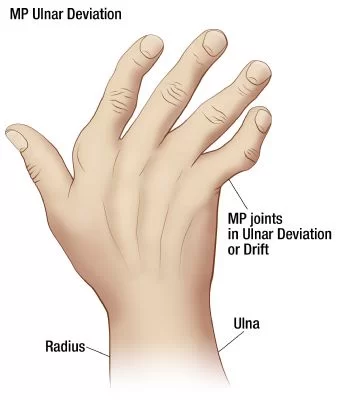
- Swan neck deformity, which is hyperextension of the distal interphalangeal joint and flexion of the proximal interphalangeal joint.

- Boutonniere deformity, which is flexion of the distal interphalangeal joint and extension of the proximal interphalangeal joint.
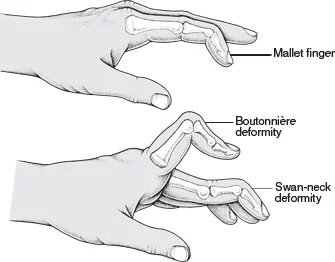
- Valgus deformity of the knee.
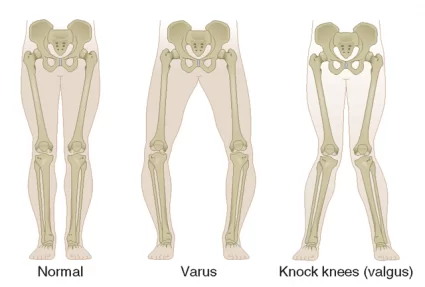
- Dryness of the eyes, mouth, and other mucus membranes is found, especially in advanced disease.
Pericarditis and pleuritis can occur but are usually clinically silent.
DIFFERENT TYPES OF TREATMENTS:
- There are mainly four types of treatment available in RA.
(1) Pharmacological agents
(2) Braces and bandages
(3) Surgery
(4) Activity modification and Exercise therapy
1. Pharmacological treatment for Rheumatoid Arthritis:
Main goals of the Pharmacological treatment is to:
– Reduce the pain
– Reduce the inflammation
– Reduce further damage and disability
Drugs used in RA:
(a) NSAIDs
(b) DMARDs
(c) Corticosteroids
(a) NSAIDs
Ibuprofen, Naproxen, Acetylsalicylic acid, and other NSAIDs are effective in pain relief, and in reducing inflammation.
They are associated with a number of side effects which includes:
– GI irritation
– Peptic ulcers
– Kidney damage
– Liver damage
(b) DMARDs
(Disease Modifying Anti-Rhematoid Drugs)
This drug group has various mechanism of action. They can alter laboratory markers of inflammation such as CRP and ESR.
E.g. Sulfasalazine, Hydroxychloroquine
Use: Its first line of drug treatment. It can be used for treatment of moderate to severe active RA in adults over 18 years of age.
(c) Corticosteroids
E.g. Prednisolone, Budesonide
Use: As continuous oral background therapy, to cover the delayed benefits of DMARDs, as intra-articular injections into inflamed joints or i..m. or i.v. injection during a flare of RA
Adverse effect:
-Avascular necrosis of bone
-Depression and psychosis
-Peptic ulceration
-Cataract (chronic use)
-Raised ICP and convulsions,
-Blood hypercoagulability,
-Menstrual disorders,
-Immunosuppression
2. Braces and bandages
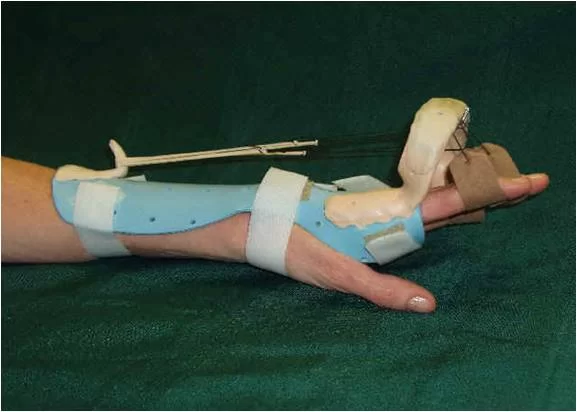
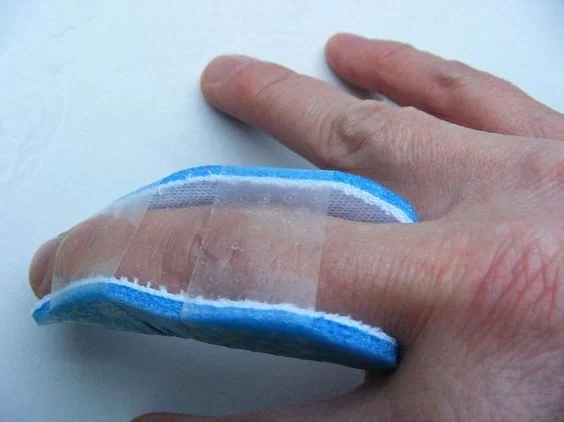

- Braces and splints are designed to relieve pain and stabilize & protect joints during periods of inflammation, when joints (especially those in the hands and wrists) are more prone to injury.
- Usually, Splints are lightweight and are easy to remove, allowing for range-of-motion exercises several times daily.
- Prolonged or improper use of splints can increase stiffness and progressively diminish muscle strength and joint mobility.
3. Surgery in RA
- Surgeries considered for people who have severe rheumatoid arthritis include:
Finger and hand surgeries: To correct joint problems in the hand.
Arthroscopy: This removes debris or inflamed tissue in a joint through a small lighted instrument.
Synovectomy: To remove inflamed joint tissue.
Arthroplasty: To replace part or all of a joint in the hip or knee. - Cervical spinal fusion, to treat severe neck pain and nerve problems.
- Resection of metatarsal heads, to remove deformed bone in the feet.
4. Physiotherapy Treatment and Exercise therapy
- Exercise testing for Resistance exercises
- Benefits of resistance exercise:
(1) Reduces inflammation and pain.
(2) Prevent contractures and deformities.
(3) Maintain or improve range of motion, muscle strength and cardiovascular fitness.
(4) Improves bone mineral density after corticosteroid administration.
(5) Hand strengthening may improve dexterity and grip strength.
- Types of resistance training:
- Isometric and isotonic exercise
- Hydrotherapy
- Use of Weights
- Elastic bands
- Weight machines
- Benefits of exercise training for persons with arthritis
- Cardiorespiratory:
Aerobic exercise improves cardiorespiratory endurance, pain, function, and with resistance training mood.
Aerobic training improves fitness without worsening disease activity. - Skeletal muscle strength and endurance:
Exercise that includes: Functional strengthening improves strength, pain, fitness, and mobility.
Hand strengthening may improve dexterity and grip strength. - Flexibility:
Joint mobility improves with dynamic exercise training. - Body composition: A combination of aerobic and resistance training decreases the percent body fat without significant weight loss and slow bone mineral density loss
EXERCISES PRESCRIPTIONS:
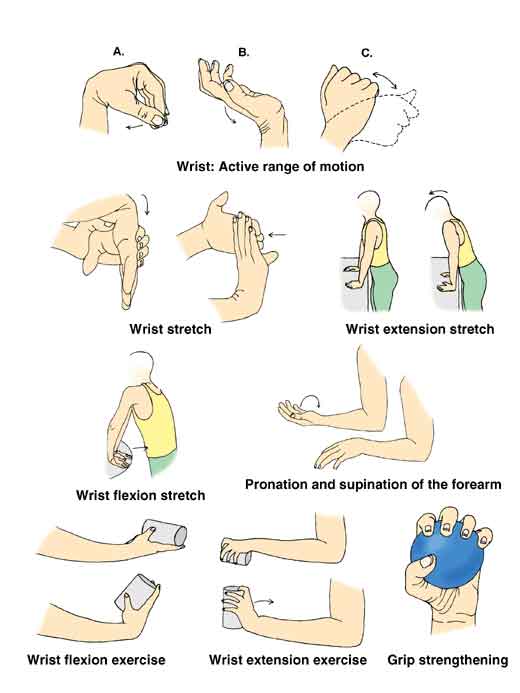
Strengthening exercises (e.g., weight training):- Help to keep or increase muscle strength. Strong muscles help support and protect joints affected by arthritis. Hand strengthening exercise is to improve grip strength.
- Range-of-motion exercises: Help to maintain normal joint movement and relieve stiffness. This type of exercise helps maintain or increase flexibility.
- Aerobic or endurance exercises (e.g., bicycle riding):- Improve cardiovascular fitness, help control weight, and improve overall function. Weight control can be important because extra weight puts extra pressure on many joints.
- Some studies show that aerobic exercise can reduce inflammation in some joints.
- Range-of-motion exercises can be done daily and should be done at least every other day.
- Strengthening exercises should be done every other day.
- Endurance exercises should be done for 20 to 30 minutes three times a week. According to the American College of Rheumatology, 20- to 30-minute exercise routines can be performed in increments of 10 minutes over the course of a day
SPECIAL CONSIDERATION:
- Hydrotherapy may attenuate pain and stiffness and reduce reliance on NSAIDs.
- Stretch and warm up with range-of-motion exercises.
- Start strengthening exercises slowly with small weights.
- Use cold packs after exercising.
- Consider appropriate recreational exercise (after doing range-of-motion, strengthening, and aerobic exercise).

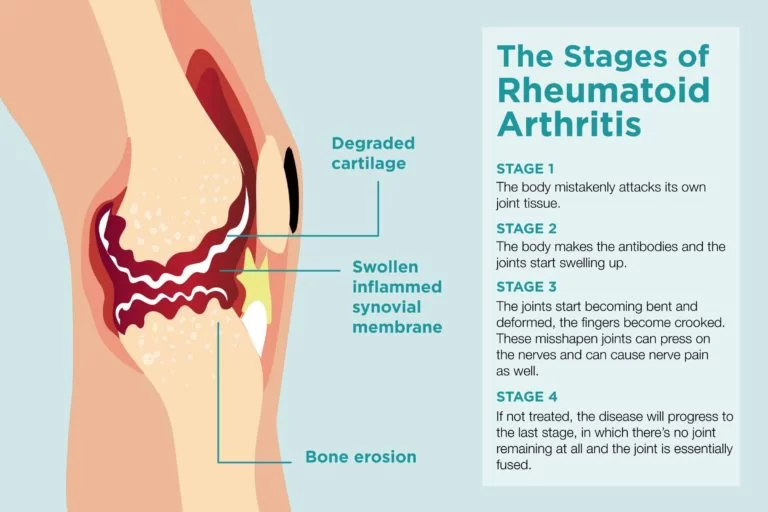
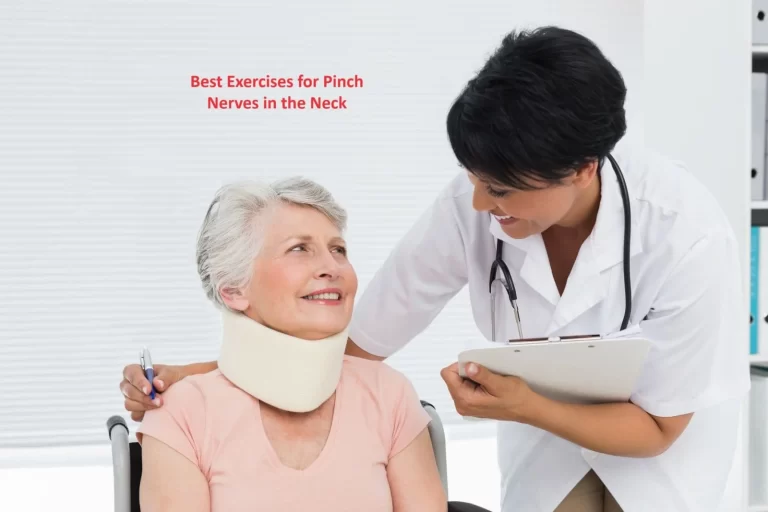
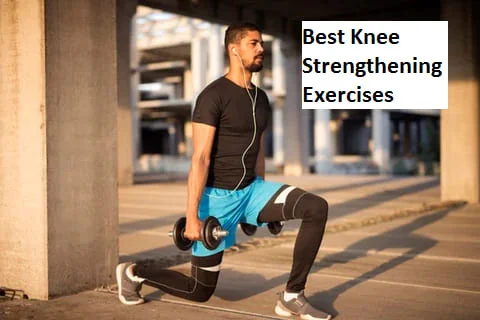
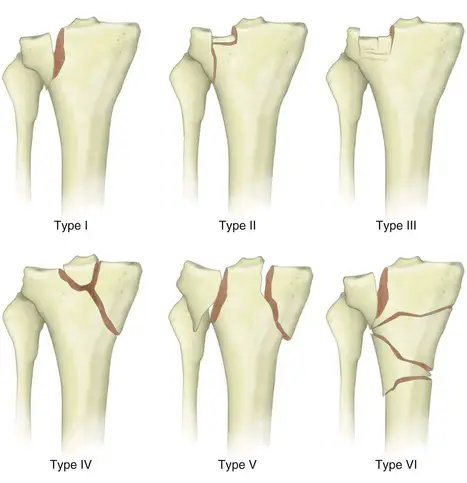
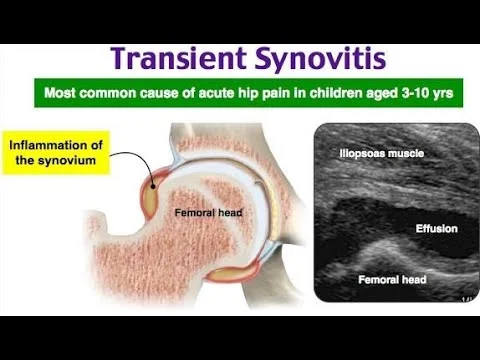
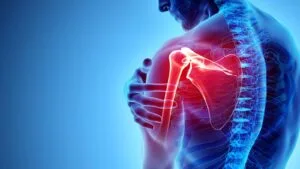
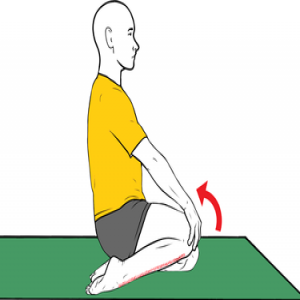
22 Comments